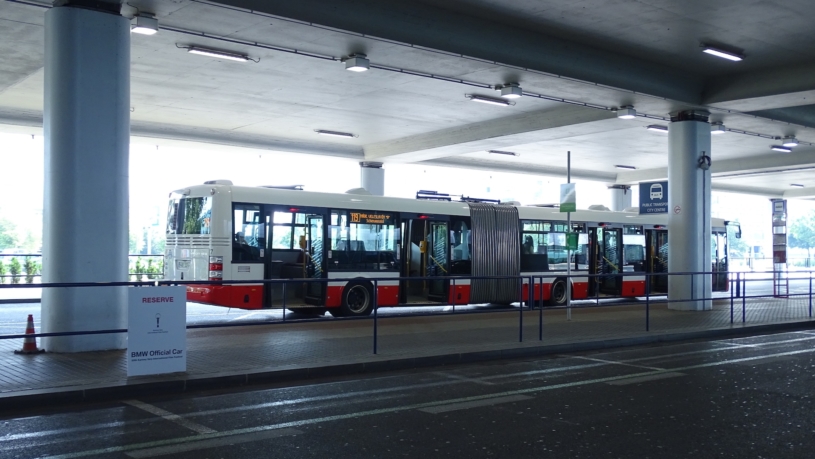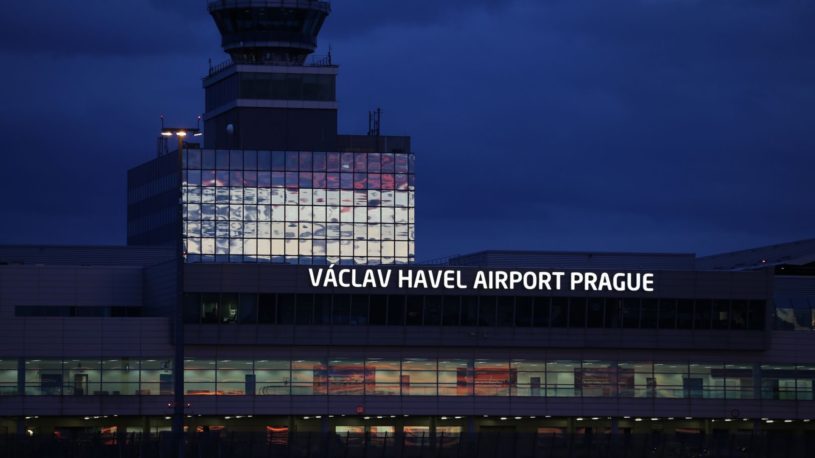In the last eight years, there have been few new cycling routes in the capital. In older route sections, people on bicycles still encounter the same flaws. But the condition of Prague’s cycling infrastructure could improve in the foreseeable future. The number of cyclists in the metropolis is increasing and existing major routes require expansion.
“We have earmarked 130 million CZK for the development of cycle paths. That’s a hundred million more than before. In the high level of preparation, the Vršovice Railway Promenade—between Vyšehrad and Skalka—will leave after the construction of the SŽDC railway corridor, ” says Pavel Polák, the Prague Cyclo-Coordinator.
Polák worked in a similar position already during the time of Mayor Pavel Bém (ODS). He was dismissed in 2012 despite criticism of this decision by the professional public. Mayor Pavel perceives him as a competent person all the time.
“As part of the renewal of the track between Prague and Kladno, a cycle path for Kladno cyclists will be created. Its eastern part will be located in Prague. These projects are also supported by the State Fund for Transport Infrastructure, ”explains Polák. Building routes using the original railway route is economically very advantageous.
There are ten plus cycling routes in the project preparation. Yet, usually three to five years pass from study to implementation. However, some new stretches might allow people to ride soon.
“We are currently completing the cycling path under Čuprová along Rokytka, and by next spring there will be ready cycling paths between Cholupice and Dolní Břežany, the Jarov cycling route or the Sedlec – Suchdol connection,” says the cyclo coordinator. The Čuprov trail, according to the deputy mayor for transport, will open twice. Moreover, Scheinherr is exploring other possibilities for cycling.
Dangerous Sections
The problem with Prague cycling transport is the shortcomings on the existing paths. For example, the A22 cycle path between Kunratice Forest and Barrandov Bridge. At one point, the bend is driven on a metal bridge that is slippery when wet. A little further towards the river beyond the baseball field, large puddles and muddy sand form. Even further, at the so-called sandpit and the exit from Jižní spojka to Braník, the cycle path leads along a narrow sidewalk, in the middle part of which is also a lamp.
It is unavoidable; the clutter adds to the place that it is cornering. Two-wheelers, who step on the pedals properly, can be in trouble. “[Issue] could be removed sometime between 2020 and 2021,” explains Polák (from the Cyclo-Coordinator).
Other problems with cycle paths are pointed out by the civic association AutoMat, which has been dealing with this issue for many years. It points out that cycling trails are constantly increasing. “The main problems are cycle paths with trails, i.e. where cycle paths or other solutions allowing safe driving are missing,” says Vratislav Filler for the Laboratory of Sustainable Urbanism of the AutoMat Association.
According to Filler, the biggest problem for cyclists is the lack of passage through the center. “But the solution here is not simple, it is a way of partial adjustments, in the end, it can only solve the complex modification of the whole waterfront along the lines of London Cycle highways,” adds AutoMat expert.
Overall, Polák sees the possibilities of cycling development more in the peripheral parts of the metropolis. An area where more space allows place for better renovation and paths for everyday-cyclist.
Prague has been discussing how to improve public transport to the airport for many years. Passengers who do not drive their own vehicles can now use buses of line 119, or taxi.
There has been much talk about the construction of the railroad track right up to the terminals or the extension of the metro, but overall everything is overtaken by another means of transport. The City of Prague announced that the 119 buses will be replaced the large-capacity electric buses in 2023.
They should relieve the current onslaught as they offer much greater capacity, as well as relieve the environment.
“The priority for us is still the fast-track to the airport, which is an investment of the Railway Infrastructure Administration and we are working intensively on it. However, due to the size of the building, this is the first solution for 2028. We decided to make it easier for passengers as soon as possible,” said Deputy Mayor of Transport Adam Scheinherr.

The result should be the electrification of route 119, for which Prague plans to purchase a total of 20 large-capacity three-cell battery-electric buses. “They will be 25 meters in length, which will greatly improve passenger comfort, make transportation easier by avoiding the adding of more bus connections while reducing exhaust emissions to zero,” adds Scheinherr.
The electrified line will, therefore, be built on the route from Nádraží Veleslavín to Václav Havel Airport, however, the trolleys that will be powered by the electric buses will not be all the way. Partial trolleybuses should be deployed, which can run part of the route without trolley lines only on batteries.
The total investment in electrification is expected to cost almost 900 million crowns, with the most going to battery buses.
In addition, Prague wants to take advantage of the synergies within the tram power network when constructing the electrified line. Although electric buses should not only be a temporary solution before the railway line is built at the airport, it will also find use elsewhere.
The infrastructure will also be used to extend the tram line from Divoká Šárka to Dědina, and Prague plans to deploy electric buses on the overloaded 112 line.
Within the next phase, the new trolleybuses are intended to relieve passengers primarily from the airport (because the line 119 today runs every 3-5 minutes, and the total number of connections in one direction is up to 250 daily, which at times it is overloaded). Since it makes no sense to further shorten the interval, Prague decided to invest in larger electric buses.

What are the Czechs like 30 years after the Velvet Revolution and how has the Czech Republic changed over the years? Academics in analysis for Czech Radio tried to answer this.
The aim of Czech Radio’s research was to find out what is the structure of Czech society, and what social classes can be found in it.
Results show that Czechs divide themes like migration or pro-Western direction. Research highlights that the theme of a divided society was fully opened by the first direct presidential election, underlined by the (social) change triggered by the economic crisis, and accelerated the migration process.
Discussion of pro-Western direction
Since the ’90s, topics of an economic nature have dominated the Czech public debate and political divisions; an economic nature that has shaped the perception of the left and right. However, emphasis on economic issues has diminished due to the establishment of the market and skepticism caused by the crisis.
“This opened the door for new cultural themes such as migration or globalization, but it also, partly, returned the debate to the question of the country’s pro-western direction. These topics have become a significant part of the political struggle,” said the analysis.
According to research, Czech society is determined not to head for the East, but Czechs are also uncertain whether it is even possible to go their own way.
The topic on which Czechs agreed, and became the subject of public debate in 2018, is environmental protection. The debate has been aggravated by drought, climate change, and bark beetle calamity.
“Czechs have long been positively committed to environmental protection, and four-fifths of the public believe that man-made climate change threatens our future. Here, the Czech public is completely united even across classes. The difference is partly in the willingness to invest in environmental protection at the expense of their own comfort,” says the research.
Drug addicts are a problem
The analysis also focused on what Czechs keep the distance from. Results show that Czech society does not support people addicted to drugs. 67 percent of the population would not accept drug addicts as visitors to the Czech Republic.
“The Czechs have the second biggest distance to Muslims, which 38 percent of respondents said they would not admit to the Czech Republic and 34 percent would only admit as visitors. Followed by Gypsies, 25 percent of respondents would not allow into the Czech Republic, and 25 percent accept them as citizens of the Czech Republic at maximum, ”says the analysis.
Drug addicts, Muslims, and Gypsies are perceived as the most unacceptable groups by Czechs.
Six classes are forming in the Czech Republic
Classes in the Czech Republic are another thing described in this research. In addition to income and wealth, researchers have found out people’s contacts and social ties. “These social ties can help you face crises and get better-paid jobs or other benefits,” explains the research.
The six classes forming differ significantly. There are two types of the upper-middle class. The first is secured by its income and property (the secured middle class). The second has less wealth but greater potential for the future, as it can strengthen through strong social contacts, cultural capital, language and digital skills (the emerging cosmopolitan class). Together, these two prosperous classes account for about a third of society.
“There are also three types of lower-middle-class that makeup half of the Czech population. It is a traditional working-class that has a solid income and wealth, but limited other resources such as contacts, cultural capital, new competences, and an endangered class that is on the contrary, socially and culturally. It is more of a middle class but economically it suffers,” says the analysis.
Specifically, the local bonds class that benefit from a combination of owned property and contacts in their neighborhood can help the lower-middle class. Every sixth Czech aged between 18 and 75 then falls into the lowest class – the so-called deprived class. This class lacks all types of capital – income, wealth, social contacts and new types of competence and human capital.
The class structure varies by region. More than half of Prague’s inhabitants belong to the two upper middle classes, while around half of the inhabitants of the Karlovy Vary and Ústí nad Labem regions belong either to the deprived class or to the endangered class, which is very economically unstable. On the other hand, the class of local ties—benefiting from contacts and assistance from its surroundings—is widespread in the rural Highlands and the religious South Moravia.
The analysis for Czech Radio was created by a team of sociologists. The survey on 4039 respondents was conducted in June 2019 by MEDIAN and STEM / MARK. It was attended by respondents from more than 1,300 municipalities and towns throughout the Czech Republic. The research was conducted through a combination of online and face-to-face interviews and is representative of the population aged 18-75 years.
